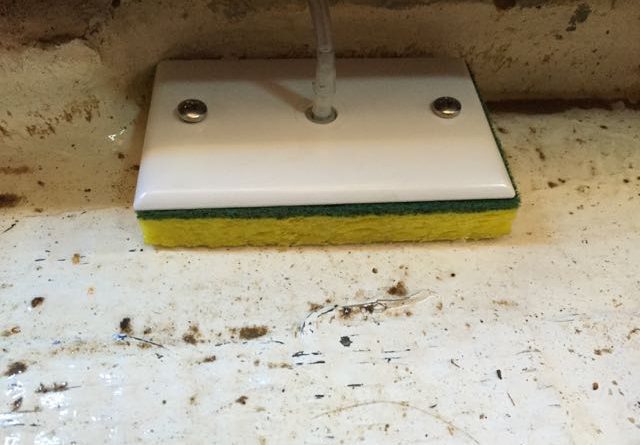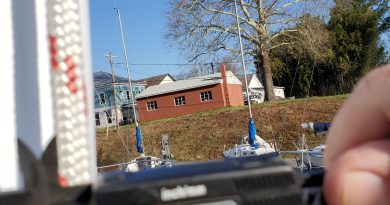Added a DIY Dry Bilge System
Our bilge has always had water in it. The bilge pumps the water level down to about 2 inches, after the pump stops and the water backflows. We replaced the stuffing box but the water level hasn’t changed. The water must be more from rainwater but haven’t found the source. The boat does not have an anchor locker, so the water runs straight into the bilge. Also, the shower dumps into the bilge. I didn’t want to place a one-way value in the main bilge pump to help reduce the amount of sitting water and haven’t stopped the rainwater (it’s on the project list). So a dry bilge system will solve the issue of standing water. Found this system on the net and for $100, believe it is worth it. A dry bilge is not worth the $900 commercial solution.
Build Your Own DIY Dry Bilge System
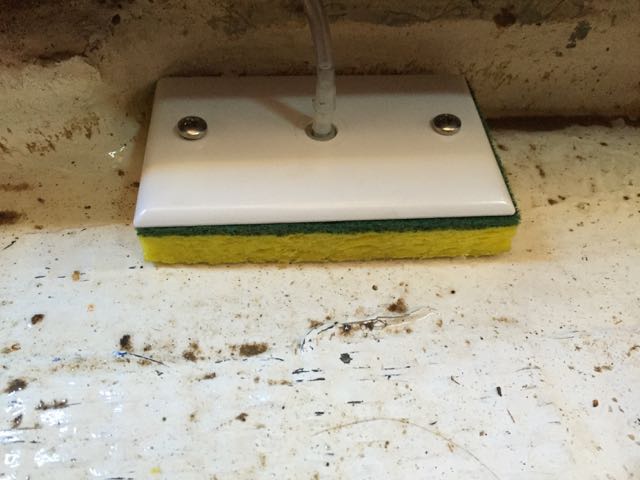
Manual and automatic bilge pumps, whether submersible centrifugal pumps or remotely mounted diaphragm pumps, cannot completely clear a bilge of water. Typically 1-3″ of water remains. In a shallow bilge boat like the Catalina 25 used for this prototype system, this can lead to a substantial volume of water remaining in the bilge. Water in the bilge can cause serious problems on many boats, including causing wood stringers to rot and internal fiberglass blistering. Bilge water is also the primary source of that distinctive “boat smell”.
At the time of writing, there are two commercially available products that address this problem, with advantages and disadvantages compared to this DIY system. The Arid Bilge system is a smart, but relatively expensive system. The more recently introduced Dry Bilge system is smart, but less so than the Arid Bilge, and is much less expensive. The Dry Bilge system appears to leave more water in the bilge than the Arid Bilge system, and appears less robustly constructed than the Arid Bilge system.
Both of these commercially available systems are intelligent, only operating their pumps when water is detected in the bilge, which results in less power consumption. As a less intelligent and much less expensive alternative, this DIY system runs on a programmable timer, which draws power on a schedule regardless of whether or not water remains in the bilge. Both of the commercial systems appear to not remove the last remnants of moisture from a bilge because they do not use sponges, and appear subject to clogging at their water pickup points. This DIY system can remove the last remnants of moisture from a bilge, does not tend to clog, and costs less than $100.
This DIY system starts with common household sponges, which absorb moisture in the bilge areas. The moisture in the sponges is sucked through small feeder tubing, leading to a simple suction manifold, with the suction generated by an inexpensive DC-electric diaphragm pump. The discharge from this pump can be plumbed into the manual bilge pump outlet hose near where it drains to the through-hull at the transom (Plumbing to the hose near the through-hull at the transom may be considered important for safety.), or routed to the lifting cable through-hull on swing-keel boats. The pump is controlled by an inexpensive DC-electric programmable timer, which can be installed on the electrical panel bulkhead. For the prototype installation, the timer was programmed to engage the pump for two minutes every six hours, which resulted in a completely dry bilge in all seasons and weather, regardless of leaks and sailing conditions. In this case, the programming could be changed to pump less, such as for two minutes every twelve hours or one minute every six hours.
In many boats, there are separate bilge areas in which water typically collects. For the prototype system, there is a separate pickup in each of these areas, a total of three pickups for the system. There is one pickup beneath the forward v-berth, accessible through the wooden hatch beneath the v-berth; one beneath the starboard salon floor, accessible through the small wooden bilge access panel; and one beneath the port salon floor, accessible through the large wooden bilge access panel.
Regarding ongoing maintenance, the pickup sponges need periodic replacement when they begin to deteriorate, at least annually in this prototype system. Allowing the sponges to deteriorate could cause the tubing to become clogged with sponge debris.
A note about pickup-to-manifold tube sizing: four different internal diameter tube sizes were tested, 1/16″, 1/8″, 1/4″, and 3/8″. The 1/8″ internal diameter tubing yielded the greatest volume of water removed when one of the sponges was wet while one of the sponges was dry, which is likely to occur in this system.
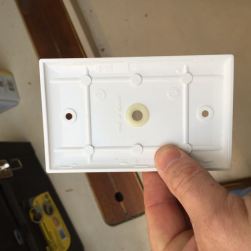
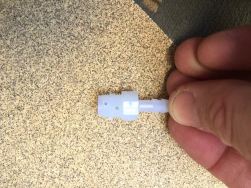

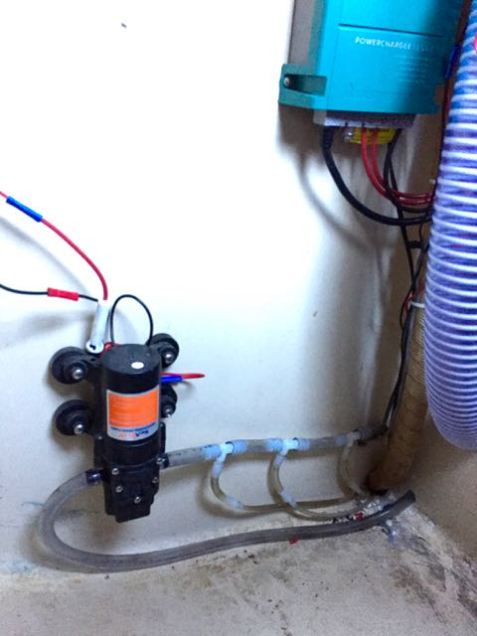
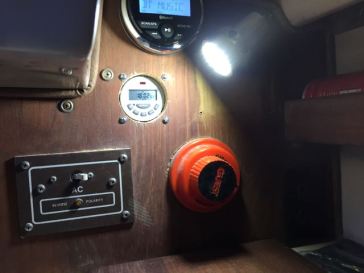
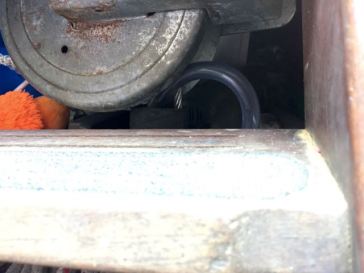
Parts:
- Seaflo 1.2gpm diaphragm pump, available from Amazon.com
- Generic 12v DC timer, available from Amazon.com
- 3/8″ clear vinyl tubing, available from most hardware stores, used for manifold, and inlet and outlet to pump
- Rubber stopper, available from most hardware stores, used for capping end of 3/8″ suction manifold
- 1/8″ clear vinyl tubing, available from most hardware stores, used for line from pickups to suction manifold
- 1/8″ to 3/8″ plastic barb fittings, available from most hardware stores, used for sponge pickups, and at suction manifold
- Household wall faceplates with center hole, available from most hardware stores, used for mounting sponge, and holding plastic barb ttings to 1/8″ tube
- #12 fine thread stainless steel screws, available from most hardware stores, used for mounting sponges to faceplates, and mounting pump to bulkhead
- #6 stainless-steal through-bolts with nuts, available from most hardware stores, used for mounting timer to electrical bulkhead
- Cable ties, available from most hardware stores, used for mounting tubing to existing systems
- 16 gauge wire, available from most hardware stores
A version of this article originally appeared in the November 2017 Catalina Yachts owners’ magazine, Mainsheet.


